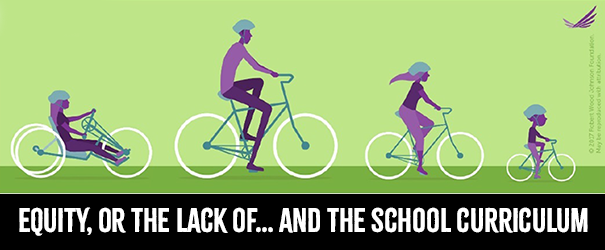Equity, or the lack of… and the school curriculum
The OECD Report Equity and Quality in Education: SUPPORTING DISADVANTAGED STUDENTS AND SCHOOLS identifies that the highest performing education systems are those that combine equity with quality. They give all children opportunities for a good quality education.
School failure penalises a child for life. The student who leaves school without completing upper secondary education or without the relevant skills has fewer life prospects. This can be seen in lower initial and lifetime earnings, more difficulties in adapting to rapidly changing knowledge-based economies, and higher risks of unemployment. The same child is also less likely to take up further learning opportunities and less able to participate fully in the civic and democratic aspects of modern societies.
Australia’s education system is failing up to one in three children and young people, according to a major study to assess progress against our current national education goals.
The report Educational opportunity in Australia 2020: Who succeeds and who misses out demonstrates large gaps in educational opportunity from early childhood through to adulthood.
Students’ postcode and their family’s resources consistently linked to success on key indicators.
These large gaps are not just about resources at schools, the gaps cover a wide range of critical skills and capabilities from school entry, with Indigenous children, children from low socioeconomic backgrounds, and children in very remote areas at least twice as likely as their peers to have a developmental vulnerability. Too often these gaps grow as students get older, with students not receiving the support they need to catch up to their peers.
Key findings in this report are:
- Where you grow up and your family’s resources strongly influence your access to critical educational opportunities and services from early childhood through to adulthood
- Indigenous students show high levels of confidence, although the system is failing to address gaps in educational opportunity and academic achievement.
- Large gaps in development are evident from school entry and usually widen as children get older, with students not receiving the support they need to catch-up to their peers.
- Even before COVID-19 too many students were falling through the cracks during the critical transition between school and the next stage in their lives, a challenge that will be exacerbated by the pandemic.
Uneven development of skills and capabilities across the population clearly identifies the groups of young people who are not being well prepared to participate socially, democratically and economically in adulthood.
This inequity is also addressed by Professor Geoff Masters AO, the Chief Executive of ACER, in his article for Teacher magazine: Debunking the equity myth in education.
Professor Masters says the well-intentioned desire to deliver the same year-level curriculum to all students needs a fundamental re-think if we are to improve educational outcomes in Australia.
He also explains how the current school curriculum and assessment model creates an illusion of providing a level playing field on which every student has an equal opportunity to learn and succeed, regardless of their background.
However, disadvantaged students may be assigned a curriculum for which they are not yet ready. They are least likely to have access to resources to counter this disadvantage. The common experience of these students is to begin each school year toward the back of the pack and on track to receive low grades.
‘It is fundamentally inequitable to insist on equal treatment when students are not equally ready,’ Professor Masters writes. ‘Equity demands a curriculum responsive to individual needs, not blind equality.’
 © 2017 Robert Wood Johnson Foundation.
© 2017 Robert Wood Johnson Foundation.
The IEU agrees with the need to prioritise equity as a key driver for the education of students, to assist them in developing the skills that might help to overcome future disadvantage.
The IEU strongly advocates for all educators to have the resources and time to ensure each student is treated with equity.
Better equity assists to develop better students, which in turn makes for better schools, better jobs and a better society.
Sources
https://www.acer.org/au/discover/article/debunking-the-equity-myth-in-education
https://www.vu.edu.au/sites/default/files/educational-opportunity-in-australia-2020.pdf
OECD (2012), Equity and Quality in Education: Supporting Disadvantaged Students and Schools, OECD Publishing. http://dx.doi.org/10.1787/9789264130852-en
https://www.oecd.org/education/school/50293148.pdf


